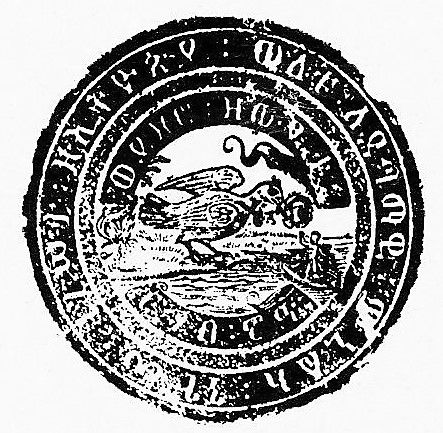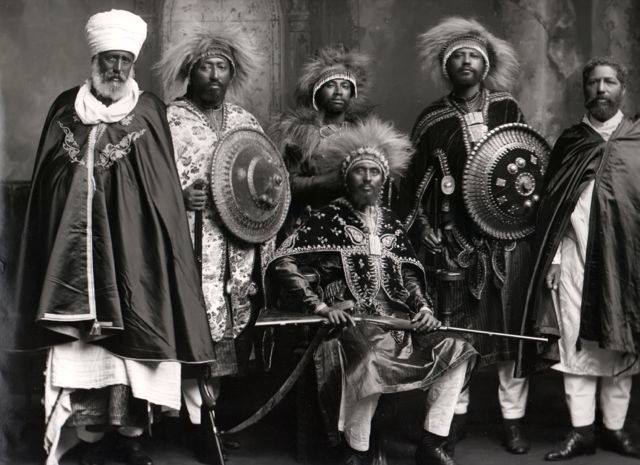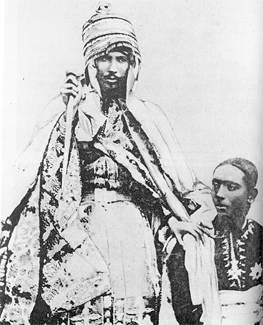|
Zewditu
, spoken = ; ''djānhoi'', lit. ''"O steemedroyal"'' , alternative = ; ''getochu'', lit. ''"Our master"'' (pl.) Zewditu ( gez, ዘውዲቱ, born Askala Maryam; 29 April 1876 – 2 April 1930) was Empress of Ethiopia from 1916 to 1930. The first female head of an internationally recognized country in Africa in the 19th and 20th centuries, and the first and only empress regnant of the Ethiopian Empire, her reign was noted for the reforms of her Regent and designated heir ''Ras'' Tafari Makonnen (who succeeded her as Emperor Haile Selassie I), about which she was at best ambivalent and often stridently opposed, due to her staunch conservatism and strong religious devotion. She is the most recent empress regnant, as well as the last female Ethiopian head of state until the 2018 election of Sahle-Work Zewde as president. Early life Baptised as Askala Maryam ("Askal of Mary", a type of flower), but using the given name ''Zewditu'', the future Empress was the eldest daught ... [...More Info...] [...Related Items...] OR: [Wikipedia] [Google] [Baidu] |
Zewditu I Seal
, spoken = ; ''djānhoi'', lit. ''"O steemedroyal"'' , alternative = ; ''getochu'', lit. ''"Our master"'' (pl.) Zewditu ( gez, ዘውዲቱ, born Askala Maryam; 29 April 1876 – 2 April 1930) was Empress of Ethiopia from 1916 to 1930. The first female head of an internationally recognized country in Africa in the 19th and 20th centuries, and the first and only empress regnant of the Ethiopian Empire, her reign was noted for the reforms of her Regent and designated heir ''Ras'' Tafari Makonnen (who succeeded her as Emperor Haile Selassie I), about which she was at best ambivalent and often stridently opposed, due to her staunch conservatism and strong religious devotion. She is the most recent empress regnant, as well as the last female Ethiopian head of state until the 2018 election of Sahle-Work Zewde as president. Early life Baptised as Askala Maryam ("Askal of Mary", a type of flower), but using the given name ''Zewditu'', the future Empress was the eldest daught ... [...More Info...] [...Related Items...] OR: [Wikipedia] [Google] [Baidu] |
Menelik II
, spoken = ; ''djānhoi'', lit. ''"O steemedroyal"'' , alternative = ; ''getochu'', lit. ''"Our master"'' (pl.) Menelik II ( gez, ዳግማዊ ምኒልክ ; horse name Abba Dagnew (Amharic: አባ ዳኘው ''abba daññäw''); 17 August 1844 – 12 December 1913), baptised as Sahle Maryam (ሣህለ ማርያም ''sahlä maryam'') was King of Shewa from 1866 to 1889 and Emperor of Ethiopia from 1889 to his death in 1913. At the height of his internal power and external prestige, the process of territorial expansion and creation of the modern empire-state was completed by 1898.Zewde, Bahru. A history of Ethiopia: 1855–1991. 2nd ed. Eastern African studies. 2001 The Ethiopian Empire was transformed under Emperor Menelik: the major signposts of modernisation were put in place, with the assistance of key ministerial advisors. Externally, Menelik led Ethiopian troops against Italian invaders in the First Italo-Ethiopian War; following a decisive victory at the Battle ... [...More Info...] [...Related Items...] OR: [Wikipedia] [Google] [Baidu] |
Haile Selassie
Haile Selassie I ( gez, ቀዳማዊ ኀይለ ሥላሴ, Qädamawi Häylä Səllasé, ; born Tafari Makonnen; 23 July 189227 August 1975) was Emperor of Ethiopia from 1930 to 1974. He rose to power as Regent Plenipotentiary of Ethiopia (''Enderase'') for Empress Zewditu from 1916. Haile Selassie is widely considered a defining figure in modern Ethiopian history, and the key figure of Rastafari, a religious movement in Jamaica that emerged shortly after he became emperor in the 1930s. He was a member of the Solomonic dynasty, which claims to trace lineage to Emperor Menelik I, believed to be the son of King Solomon and Makeda the Queen of Sheba. Haile Selassie attempted to modernize the country through a series of political and social reforms, including the introduction of the 1931 constitution, its first written constitution, and the abolition of slavery. He led the failed efforts to defend Ethiopia during the Second Italo-Ethiopian War and spent most of the period of ... [...More Info...] [...Related Items...] OR: [Wikipedia] [Google] [Baidu] |
Haile Selassie I
Haile Selassie I ( gez, ቀዳማዊ ኀይለ ሥላሴ, Qädamawi Häylä Səllasé, ; born Tafari Makonnen; 23 July 189227 August 1975) was Emperor of Ethiopia from 1930 to 1974. He rose to power as Regent Plenipotentiary of Ethiopia (''Enderase'') for Empress Zewditu from 1916. Haile Selassie is widely considered a defining figure in modern Ethiopian history, and the key figure of Rastafari, a religious movement in Jamaica that emerged shortly after he became emperor in the 1930s. He was a member of the Solomonic dynasty, which claims to trace lineage to Emperor Menelik I, believed to be the son of King Solomon and Makeda the Queen of Sheba. Haile Selassie attempted to modernize the country through a series of political and social reforms, including the introduction of the 1931 constitution, its first written constitution, and the abolition of slavery. He led the failed efforts to defend Ethiopia during the Second Italo-Ethiopian War and spent most of the period of I ... [...More Info...] [...Related Items...] OR: [Wikipedia] [Google] [Baidu] |
Gugsa Welle
Gugsa Welle (1875 – 31 March 1930), also known as Gugsa Wale, Gugsa Wolie and Gugsa Wele (cited as Ras Gugsà Oliè in Italian books and encyclopedias), was an army commander and a member of the Royal family of the Ethiopian Empire. He represented a provincial ruling elite which was often at odds with the Ethiopian central government. Biography Gugsa was born in Marto in Yejju Province. He was the son of ''Ras'' Welle Betul and the nephew of Empress Taytu Betul. His half-sister, Kefey Wale, was the second wife of ''Ras'' Mangesha Yohannes, the natural son of Emperor Yohannes IV. Prouty quotes Bairu Tafla's favorable opinion of Gugsa as "One of the most enlightened men of the Ethiopian nobility, a renowned poet, great lover of books, and pious and fair in the administration of Begemder." Taytu Betul arranged the marriage of Gugsa Welle to ''Leult'' Zewditu, the eldest daughter of Emperor Menelek II and an earlier wife. They were married in 1900, sixteen years before her e ... [...More Info...] [...Related Items...] OR: [Wikipedia] [Google] [Baidu] |
Lij Iyasu
''Lij'' Iyasu ( gez, ልጅ ኢያሱ; 4 February 1895 – 25 November 1935) was the designated Emperor of Ethiopia from 1913 to 1916. His baptismal name was Kifle Yaqob (ክፍለ ያዕቆብ ''kəflä y’aqob''). Ethiopian emperors traditionally chose their regnal name on the day they were crowned, and since he was never crowned, he is usually referred to as '' Lij'' Iyasu, "Lij" meaning child, especially one born of royal blood. Early life and ancestry ''Lij'' Iyasu was born on 4 February 1895 in the city of Dessie, in the Wollo province of Ethiopia. Iyasu’s father was descended from the Muslim rulers of Wollo and was of mostly Oromo descent, while his mother ''Woizero'' ("Lady") Shoaregga, was a Shewan Amhara and the eldest daughter of Emperor Menelik II. Iyasu's father was ''Ras'' Mikael, Governor of Wollo and longstanding friend of Menelik. Mikael had been born ''Mohammed Ali'' and was a Muslim until 1875, when he converted to Christianity. Emperorship Background L ... [...More Info...] [...Related Items...] OR: [Wikipedia] [Google] [Baidu] |
Iyasu V
''Lij'' Iyasu ( gez, ልጅ ኢያሱ; 4 February 1895 – 25 November 1935) was the designated Emperor of Ethiopia from 1913 to 1916. His baptismal name was Kifle Yaqob (ክፍለ ያዕቆብ ''kəflä y’aqob''). Ethiopian emperors traditionally chose their regnal name on the day they were crowned, and since he was never crowned, he is usually referred to as '' Lij'' Iyasu, "Lij" meaning child, especially one born of royal blood. Early life and ancestry ''Lij'' Iyasu was born on 4 February 1895 in the city of Dessie, in the Wollo province of Ethiopia. Iyasu’s father was descended from the Muslim rulers of Wollo and was of mostly Oromo descent, while his mother ''Woizero'' ("Lady") Shoaregga, was a Shewan Amhara and the eldest daughter of Emperor Menelik II. Iyasu's father was ''Ras'' Mikael, Governor of Wollo and longstanding friend of Menelik. Mikael had been born ''Mohammed Ali'' and was a Muslim until 1875, when he converted to Christianity. Emperorship Background ... [...More Info...] [...Related Items...] OR: [Wikipedia] [Google] [Baidu] |
Ethiopian Aristocratic And Court Titles
Until the end of the Ethiopian monarchy in 1974, there were two categories of nobility in Ethiopia and Eritrea. The Mesafint ( gez, መሳፍንት , modern , singular መስፍን , modern , "prince"), the hereditary nobility, formed the upper echelon of the ruling class. The Mekwanint ( gez, መኳንንት , modern , singular መኰንን , modern or am, መኮንን , "officer") were the appointed nobles, often of humble birth, who formed the bulk of the aristocracy. Until the 20th century, the most powerful people at court were generally members of the ''Mekwanint'' appointed by the monarch, while regionally, the ''Mesafint'' enjoyed greater influence and power. Emperor Haile Selassie greatly curtailed the power of the ''Mesafint'' to the benefit of the ''Mekwanint'', who by then were essentially coterminous with the Ethiopian government. The ''Mekwanint'' were officials who had been granted specific offices in the Abyssinian government or court. Higher ranks from the titl ... [...More Info...] [...Related Items...] OR: [Wikipedia] [Google] [Baidu] |
Enderase
Until the end of the Ethiopian monarchy in 1974, there were two categories of nobility in Ethiopia and Eritrea. The Mesafint ( gez, መሳፍንት , modern , singular መስፍን , modern , "prince"), the hereditary nobility, formed the upper echelon of the ruling class. The Mekwanint ( gez, መኳንንት , modern , singular መኰንን , modern or am, መኮንን , "officer") were the appointed nobles, often of humble birth, who formed the bulk of the aristocracy. Until the 20th century, the most powerful people at court were generally members of the ''Mekwanint'' appointed by the monarch, while regionally, the ''Mesafint'' enjoyed greater influence and power. Emperor Haile Selassie greatly curtailed the power of the ''Mesafint'' to the benefit of the ''Mekwanint'', who by then were essentially coterminous with the Ethiopian government. The ''Mekwanint'' were officials who had been granted specific offices in the Abyssinian government or court. Higher ranks from the titl ... [...More Info...] [...Related Items...] OR: [Wikipedia] [Google] [Baidu] |
Araya Selassie Yohannes
''Ras'' Araya Selassie Yohannes ( ti, አርአያ ስላሴ ዮሓንስ ''araya səllase yohannəs''; "horse name" Abba Deblaq) (1869/70 – 10 June 1888) was a son of ''atse'' Yohannes IV from his wife Masitire Selassie, a daughter of a Muslim Afar chieftain whom he married after she was Christened. Araya was nominated Crown Prince. Araya was the first husband of Zewditu (later Empress), the daughter of ''atse'' Menelik II, having married her in January 1883. He was given the command of Wollo province at the time of his wedding. Because of a revolt raised in Wollo due to the death of ''dejazmach'' Amda Sadiq, chief of Tekaledere, in a quarrel with Araya's followers, Yohannes IV decided to appoint ''ras'' Mikael Ali, the traditional claimant to the lordship of Wollo. ''Ras'' Araya was transferred to Begemder and Dembaya in May 1886. In 1887–88, when the country was facing the Italian threat, he was commander of 40,000 troops near Adwa. Araya died in his youth from smallpox, ... [...More Info...] [...Related Items...] OR: [Wikipedia] [Google] [Baidu] |
Solomonic Dynasty
The Solomonic dynasty, also known as the House of Solomon, was the ruling dynasty of the Ethiopian Empire formed in the thirteenth century. Its members claim lineal descent from the biblical King Solomon and the Queen of Sheba. Tradition asserts that the queen gave birth to Menelik I after her Biblically described visit to Solomon in Jerusalem. In 1270, the Zagwe dynasty was overthrown by Yekuno Amlak, who claimed descent from Solomon and founded the Solomonic era of Ethiopia. The dynasty lasted until 1974, ended by a coup d'état and the deposition of Haile Selassie, who was a Solomonic prince through his grandmother. History The Solomonic dynasty, a bastion of Ethiopian Orthodox Christianity, came to rule Ethiopia on 10 Nehasé 1262 EC (10 August 1270 CE) when Yekuno Amlak overthrew the last ruler of the Zagwe dynasty at the Battle of Ansata. Yekuno Amlak claimed direct male line descent from the old Axumite royal house that the Zagwes had replaced on the throne. Menelik ... [...More Info...] [...Related Items...] OR: [Wikipedia] [Google] [Baidu] |
Emperor Of Ethiopia
The emperor of Ethiopia ( gez, ንጉሠ ነገሥት, nəgusä nägäst, "King of Kings"), also known as the Atse ( am, ዐፄ, "emperor"), was the hereditary monarchy, hereditary ruler of the Ethiopian Empire, from at least the 13th century until the abolition of the monarchy in 1975. The emperor was the head of state and head of government, with ultimate executive power, executive, judicial power, judicial and legislative power in that country. A ''National Geographic'' article from 1965 called imperial Ethiopia "nominally a constitutional monarchy; in fact [it was] a benevolent dictatorship, benevolent autocracy". Title and style The title "King of Kings", often rendered imprecisely in English as "emperor", dates back to ancient Mesopotamia, but was used in Aksumite Empire, Axum by King Sembrouthes (c. 250 AD). However, Yuri Kobishchanov dates this usage to the period following the Persian Empire, Persian victory over the Roman Empire, Romans in 296–297. The most notabl ... [...More Info...] [...Related Items...] OR: [Wikipedia] [Google] [Baidu] |









